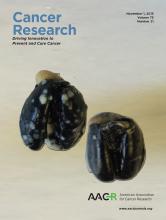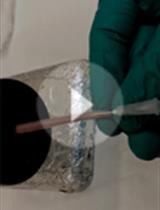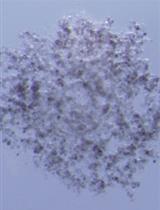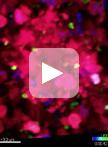- EN - English
- CN - 中文
Macrophage Polarization by Tumor-induced MDSCs Assay
利用肿瘤诱导的骨髓源抑制细胞(MDSCs)进行的巨噬细胞极化实验
发布: 2016年08月20日第6卷第16期 DOI: 10.21769/BioProtoc.1900 浏览次数: 14181
评审: Lee-Hwa TaiClara Lubeseder-MartellatoToshitsugu Fujita
Abstract
Myeloid derived suppressor cells (MDSCs) are a subset of granulocytes (immature myeloid cells) that exploit a variety of mechanism to modulate the innate and adaptive immune system. MDSCs are present normally in the body, but their numbers increase during inflammation and in cancer, promoting an immunosuppressive microenvironment. In addition to MDSCs, macrophages also play an important role during cancer development. There are two subsets of tumor associated macrophages (TAMs): M1 and M2. M1 are “anti-tumor” macrophages that are activated by interferon gamma (IFN-γ) and/or Lipopolysaccharide (LPS) and secrete high amount of interleukin 12 (IL-12) thereby inducing a Th1 anti-tumor immune response. M2 or “pro-tumorigenic” macrophages are activated by interleukin 4 (IL-4) and interleukin 10 (IL-10) and secrete large amounts of IL-10, which promotes tumor progression (Gabrilovich et al., 2012).
Interaction between MDSCs and macrophages in the tumor microenvironment was shown to enhance immune suppression mediated by these subsets. MDSCs influence TAMs by producing IL-10 that, in turn, induces a down-regulation of IL-12 and polarizes M1 into M2 macrophages. In our study, we use the following protocol to evaluate the ability of tumor induced MDSCs to polarize LPS activated M1 into M2 macrophages (Vences-Catalan et al., 2015). This protocol was adapted from a previous study (Sinha et al., 2007).
Materials and Reagents
- 70 μm cell strainer (Corning, Falcon®, catalog number: 352350 )
- 1 and 10 ml syringe (BD, catalog number: 309659 and 309604 )
- 15 and 50 ml polypropylene conical tubes (Corning, Falcon®, catalog number: 352096 and 352070 )
- 18 gauze needle (BD, catalog number: 305196 )
- 24-well plates (Corning, Falcon®, catalog number: 351147 )
- Mice
Note: We use 6-8 weeks old female Balb/c mice, but any strain of mice can be used as long as both macrophages and MDSCs are from the same genetic background. - Cells
Note: We use 4T1 breast cancer cell line syngeneic to Balb/c; this tumor model is known to induce a strong accumulation of MDSCs in blood, spleen and tumor. - Thioglycolate (BD, catalog number: 211716 )
Note: A 3% solution in water and sterilized in autoclave at 121 °C for 15 min has been used. - PBS (Corning, Cellgro, catalog number: 21-031-CV )
- RPMI 1640 (Corning, Cellgro, catalog number: 10-040-CV )
- DMEM media (Corning, Cellgro, catalog number: 10-017-CV )
- Penicillin-Streptomycin (Pen-Strep) (Thermo Fisher Scientific, GibcoTM, catalog number: 15140-22 )
Note: 5 ml of this solution was used in 500 ml of RPMI 1640 media. - Fetal calf serum (FCS) (GE Life Sciences, HyCloneTM, FetalClone®III, catalog number: SH30109.03 )
- ACK buffer (Quality Biological, catalog number: 118-156-101 )
- IL-12p70 and IL-10 ELISA kit (Biolegend, Legend MaxTM, catalog number: 431417 and 433607 )
- CD11b PE (clone: M1/70) (BD, catalog number: 553311 )
- F4/80 APC (clone: BM8) (eBioscience, catalog number: 17-4801-82 )
- Anti Ly6G and Ly6c (Gr1) APC (clone: RB6-8C5) (BD, catalog number: 553129 )
- LPS 1 mg/ml (Sigma-Aldrich, catalog number: L3012-5MG )
Note: If using a different tumor model where MDSCs in blood or spleen represents a small percentage of total Peripheral Blood Mononuclear Cells or splenocytes, respectively, purify MDSCs with myeloid-derived suppressor cell isolation kit and follow instructions according to manufacturers protocol (Miltenyi Biotec, catalog number: 130-094-538 ).
Equipment
- Centrifuge (Eppendorf, model: 5810 R )
Procedure
文章信息
版权信息
© 2016 The Authors; exclusive licensee Bio-protocol LLC.
如何引用
Vences-Catalán, F., Srivastava, M. K. and Levy, S. (2016). Macrophage Polarization by Tumor-induced MDSCs Assay. Bio-protocol 6(16): e1900. DOI: 10.21769/BioProtoc.1900.
分类
免疫学 > 免疫细胞功能 > 髓源抑制细胞
癌症生物学 > 肿瘤免疫学 > 肿瘤微环境 > 免疫抑制
您对这篇实验方法有问题吗?
在此处发布您的问题,我们将邀请本文作者来回答。同时,我们会将您的问题发布到Bio-protocol Exchange,以便寻求社区成员的帮助。
Share
Bluesky
X
Copy link















